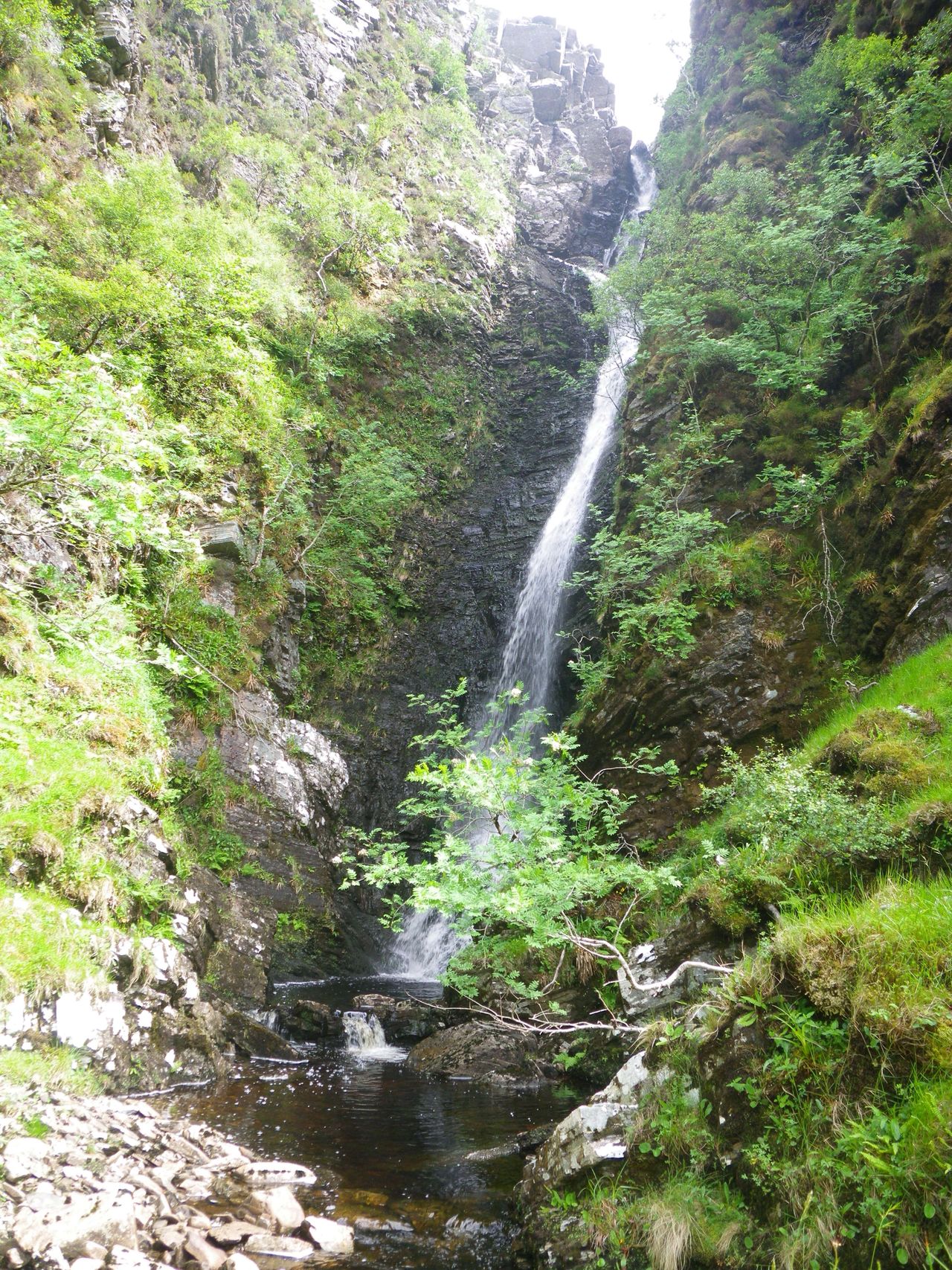
A recent contract really highlighted not just the extent, but the intensity, of historic grazing in Scotland. This has evidently had a profound effect so the restoration of some woodlands is limited not just by current deer & sheep grazing but also the legacy of goats in particular.
Scotland’s forested potential is revealed by the persistence of woodland plants now lacking a tree canopy. These ‘relicts’ frequently persist on north-facing crags & slopes, amongst scree, and in gulleys, where the shade & humidity mimic the conditions below a tree canopy. Bracken can also provide an alternative canopy but accumulations of its fronds eventually smother anything beneath. Freedom from grazing on inaccessible ledges or islands often results in the most species-rich, relict assemblages but even in pasture, less-palatable relicts such as bluebell, great wood-rush, lesser celandine & wood anemone can be frequent.
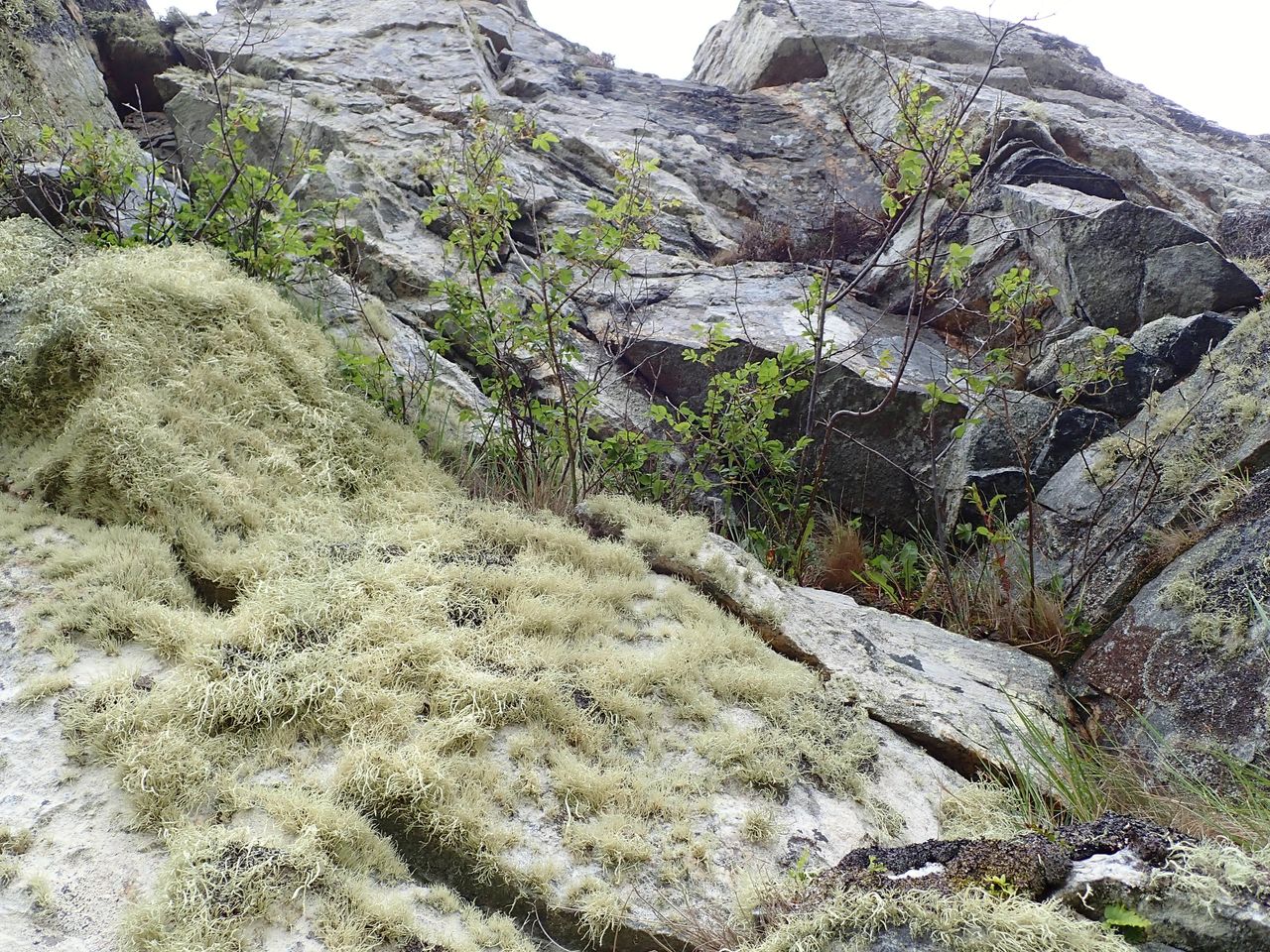
Equally, there are suitable areas for relicts where none are present, although there may be trees attesting to the woodland potential. One such site in Sutherland was the subject of routine habitat survey by Botanæco, in 2019. Much of Sutherland is challenging to trees because of the extensive, waterlogged peatlands but its woodland potential is evident on well-drained, wooded slopes, cliffs & islands, and in gorges, where there is freedom from grazing. The small, potentially woodland areas, and the even smaller woodlands, means that the source of seed and its chance of finding suitable ground is limited. Woodland regeneration is therefore affected by this ‘source-sink’ problem despite declining numbers of grazing animals. The 2019 site is a useful example of the woodland relict – shrub/tree canopy mismatch as well as the ongoing senescence of woodland relicts including trees. The area’s precise location & name don’t matter because it is so typical of northern Scotland but we can call it ‘Coille Briste’.
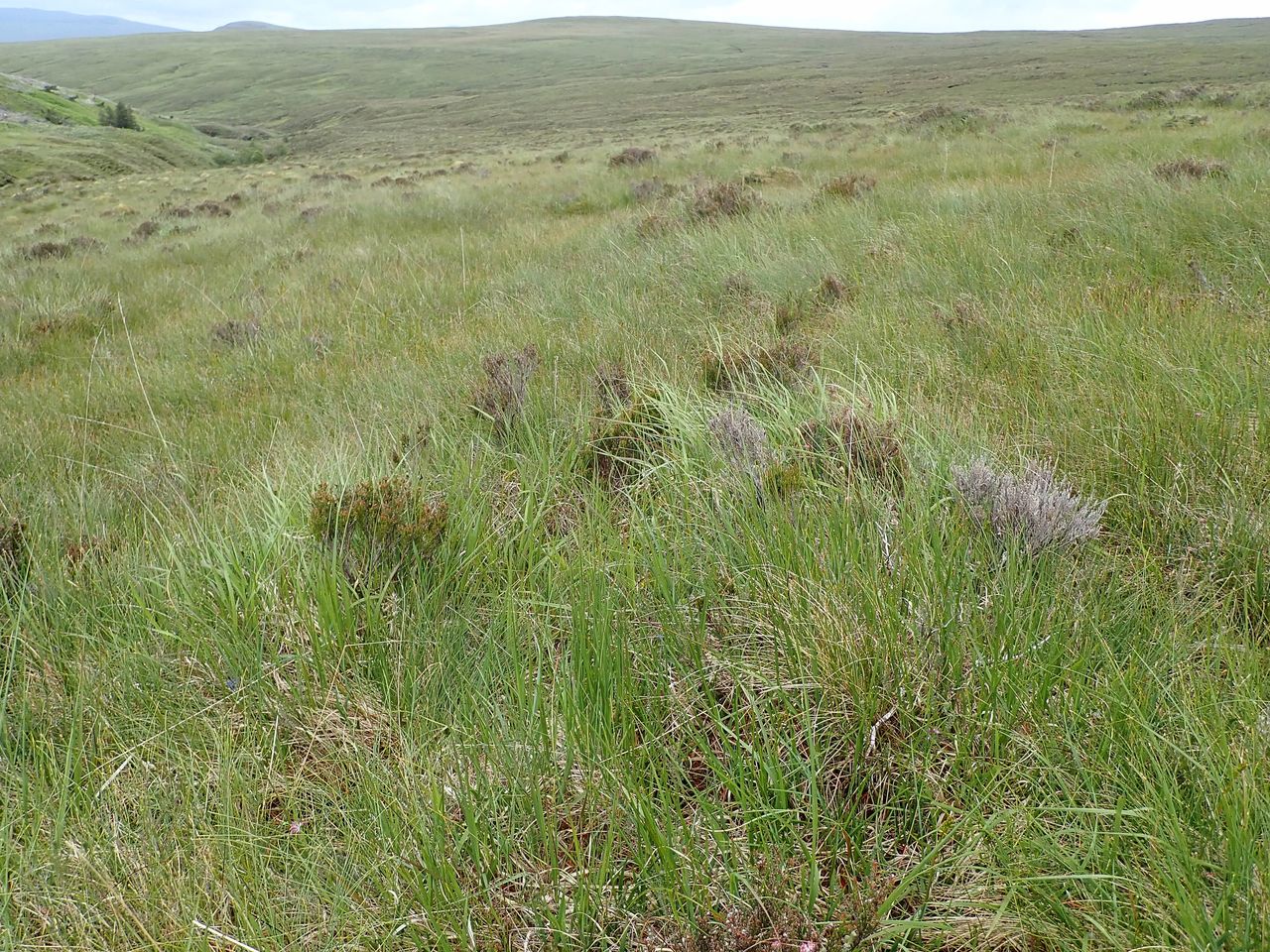
The first impression of Coille Briste is the absence of woodland. Extensive blanket bog & wet heath extend across its gentle slopes instead. Erosion of these reveals a dense network of tree-roots and a previously extensive pinewood cover. In some places, the trees will have been displaced naturally, with increasing precipitation from around 6,000 years ago facilitating a spread of waterlogging & peatland. In other places, the trees will have been displaced by human activity. Following this, soils will have become more waterlogged and less suitable for a return to woodland, but more suitable for peatland formation.
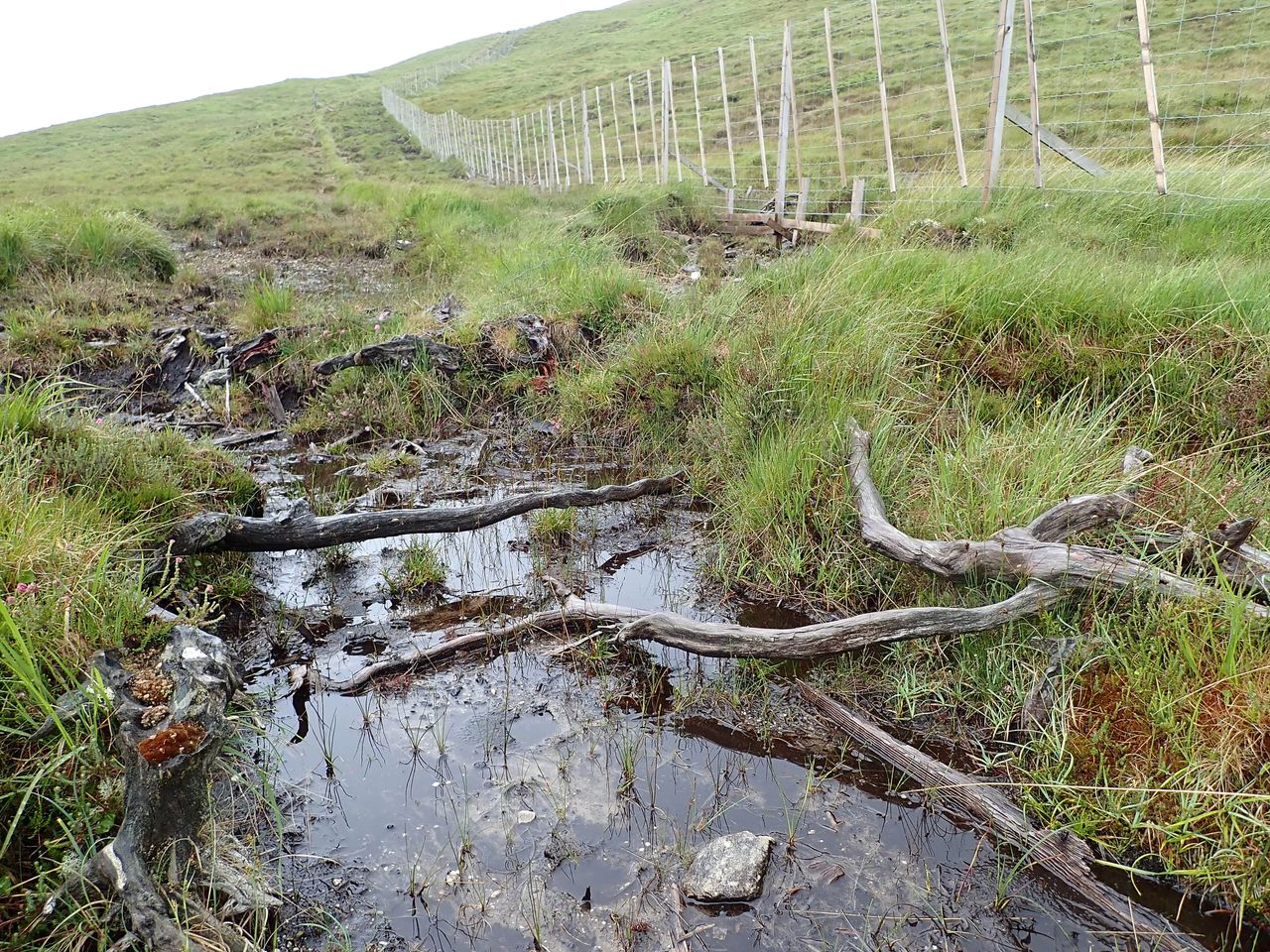
A current phase of senescence is evident along the river in the lowest parts of Coille Briste where a discontinuous line of alders along the main river’s banks is the only woodland element. 15% of the alders are dead, the remainder senescent, and the couple of heavily grazed saplings are insufficient to replace their elders, if/when they get the chance to mature. Otherwise, indistinctive wet heath & patchy acid grassland line the river banks, and woodland relict herbs are completely absent, even on low crags. Only a single juniper & patch of mountain everlasting adds some distinction.
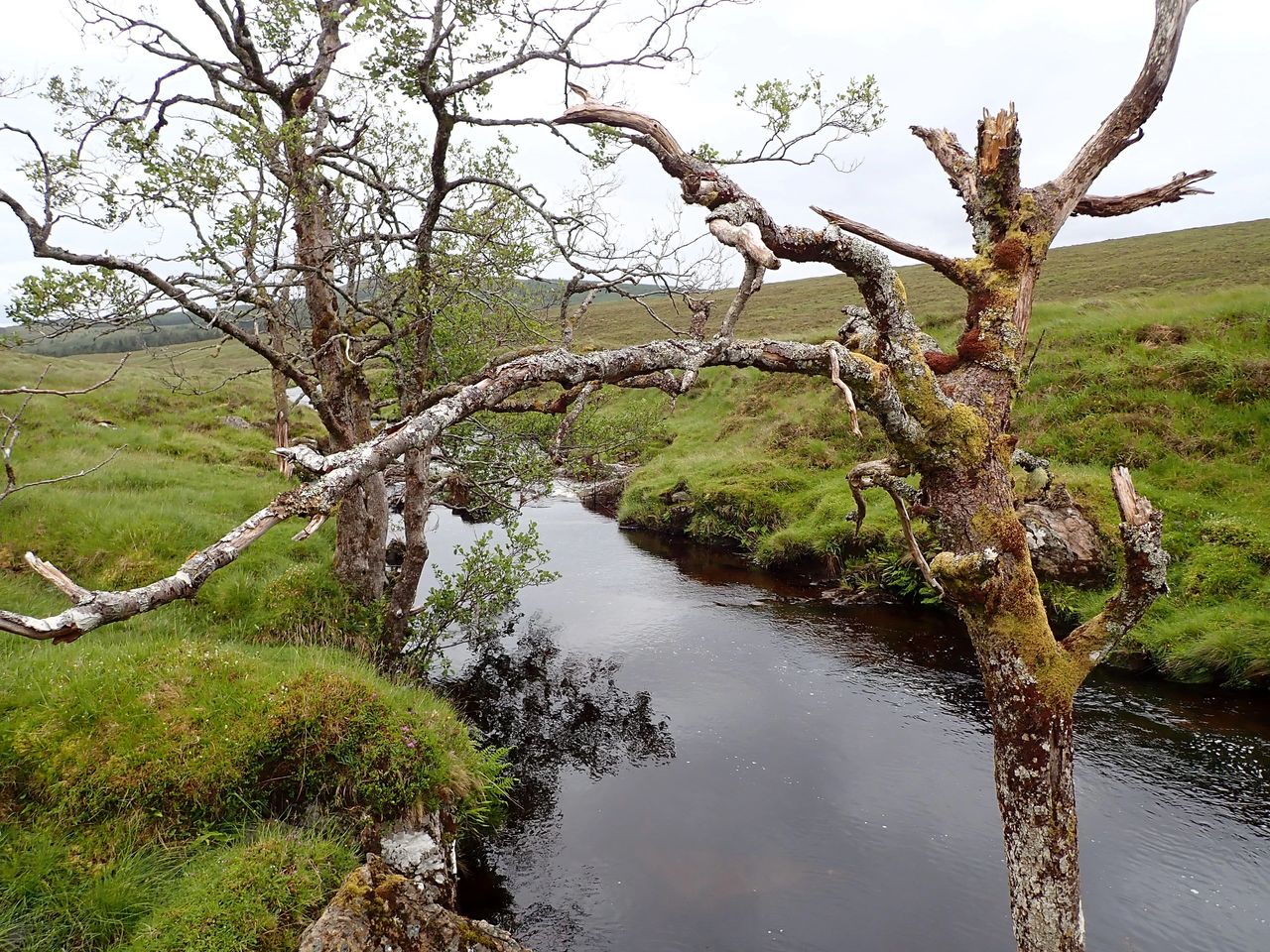
Further upstream, the river steepens to flow swiftly over numerous falls within a gorge. The spray, shade & humidity of a gorge is usually sufficient to maintain woodland relicts, especially alongside the patchy canopy of trees in sections inaccessible to grazing animals. However, the number of relicts is extremely low at Coille Briste, so only common polypody, dog rose, great wood-rush, hard fern, male fern, honeysuckle, oak fern, soft shield-fern &/or wood sorrel were recorded in three, inaccessible locations. Birch is the dominant tree in the discontinuous canopy; eared willow, grey willow & rowan are frequent; and aspen is rare. Aspen is likely to be a relict, especially as it is associated with inaccessible cliffs alone, whereas the other trees are more effective & common colonists capable of blowing in from numerous, scattered sources.

The species-poverty, lack of distinction & prominence of colonists in the woodland vegetation is suggestive of a phase during which it has become almost completely absent. Grazing is most likely to have been responsible because of the current confinement of aspen and other relicts to inaccessible cliffs (c. 2-8 m high) at Coille Briste. Furthermore, steep slopes that are inaccessible to deer & sheep are now colonised by trees but relicts are wholly absent (and presumably grazed-out historically). Woodland harvesting by humans is unlikely because this would not have led to the widespread loss of relict herbs within the humid gorge.
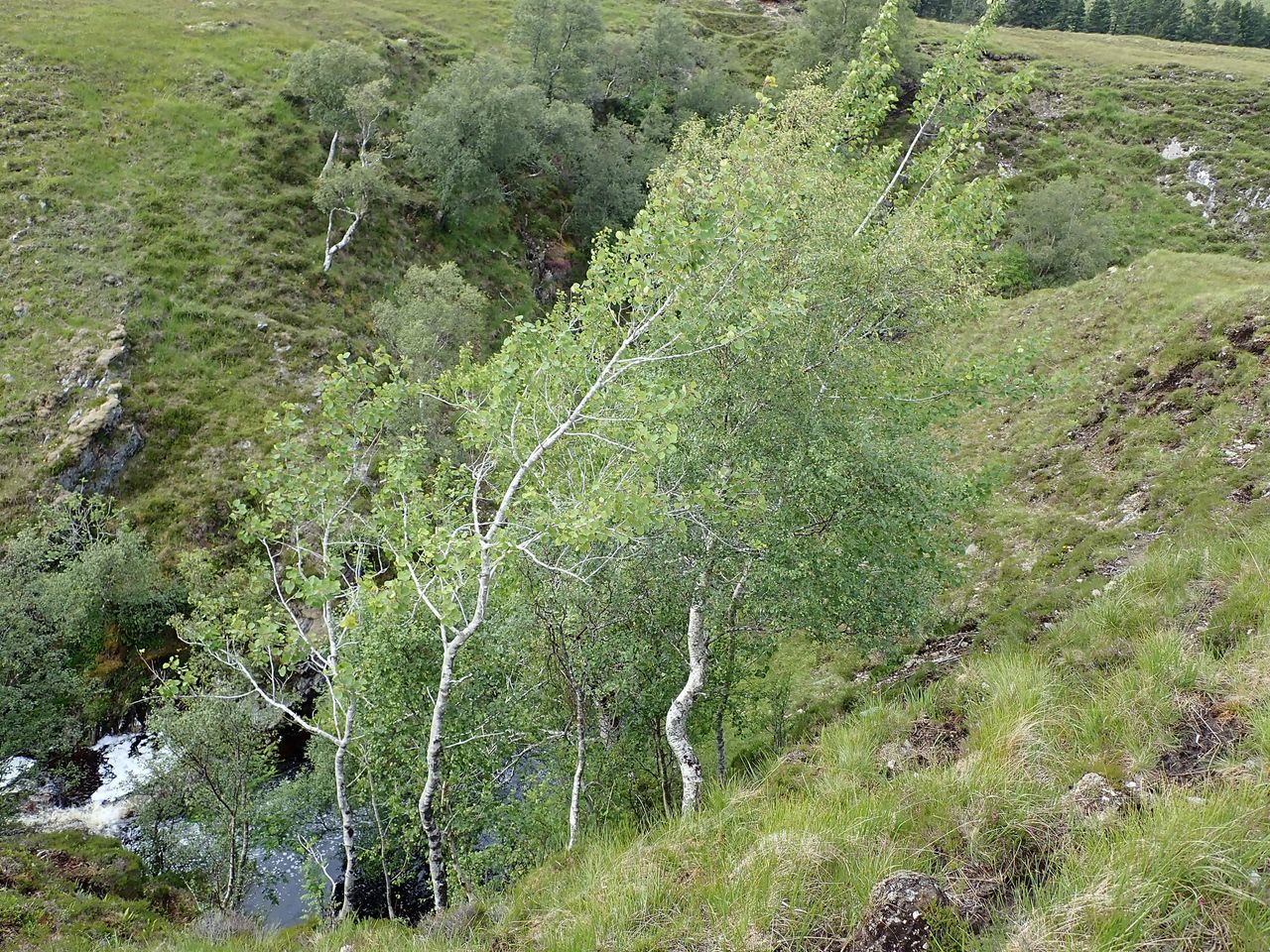
These observations are a reminder that goats have been responsible for the decimation of woodland habitat over several millennia. Goats are much better climbers than deer or sheep so they can access almost every nook & crannie, but for the taller cliffs at Coille Briste on which relicts persist. They then damage woodlands wholescale because goats eat anything & everything, everywhere: herbs, saplings, shrubs and even lichens & mosses. Eventually, the whole woodland can fail when its regeneration is prevented by the invasive & intensive grazing of goats.
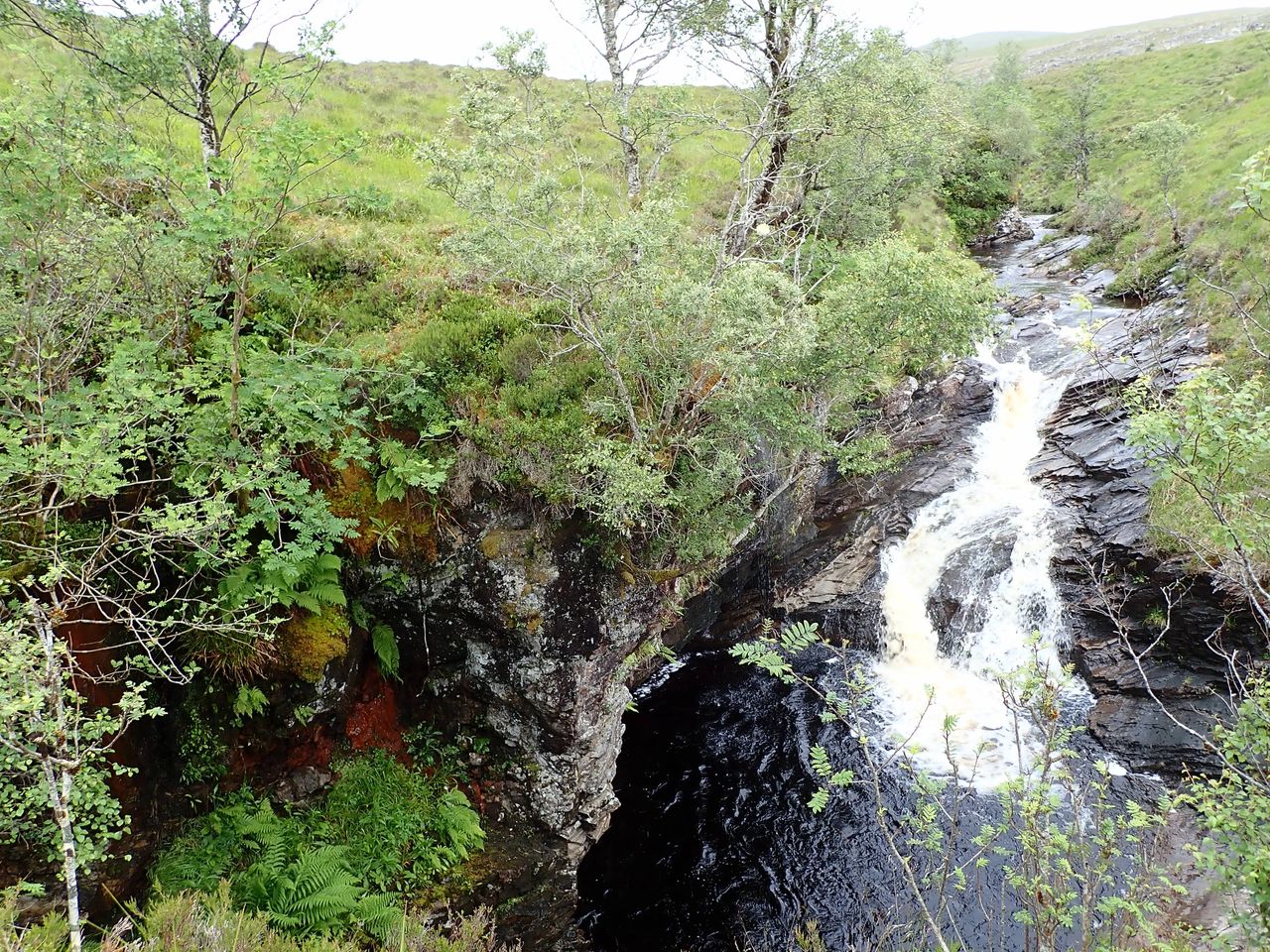
It is easy to forget that goats were once a regular sight in the Highlands, especially prior to the clearances in 1750. Throughout the millenia before then, goats have probably needed to intensively graze an isolated woodland gorge just once, to leave a persistently impoverished flora, whereas the relicts need to have been consistently lucky. Goats, in association with more extensive grazing by cattle, deer & sheep, have therefore left us with an enduring legacy of incomplete or extirpated woodland assemblages. After 1750, the abandoned domestic goats became feral herds and some persist, while others have been culled or even put on contraceptives to prevent ongoing damage to woodlands.
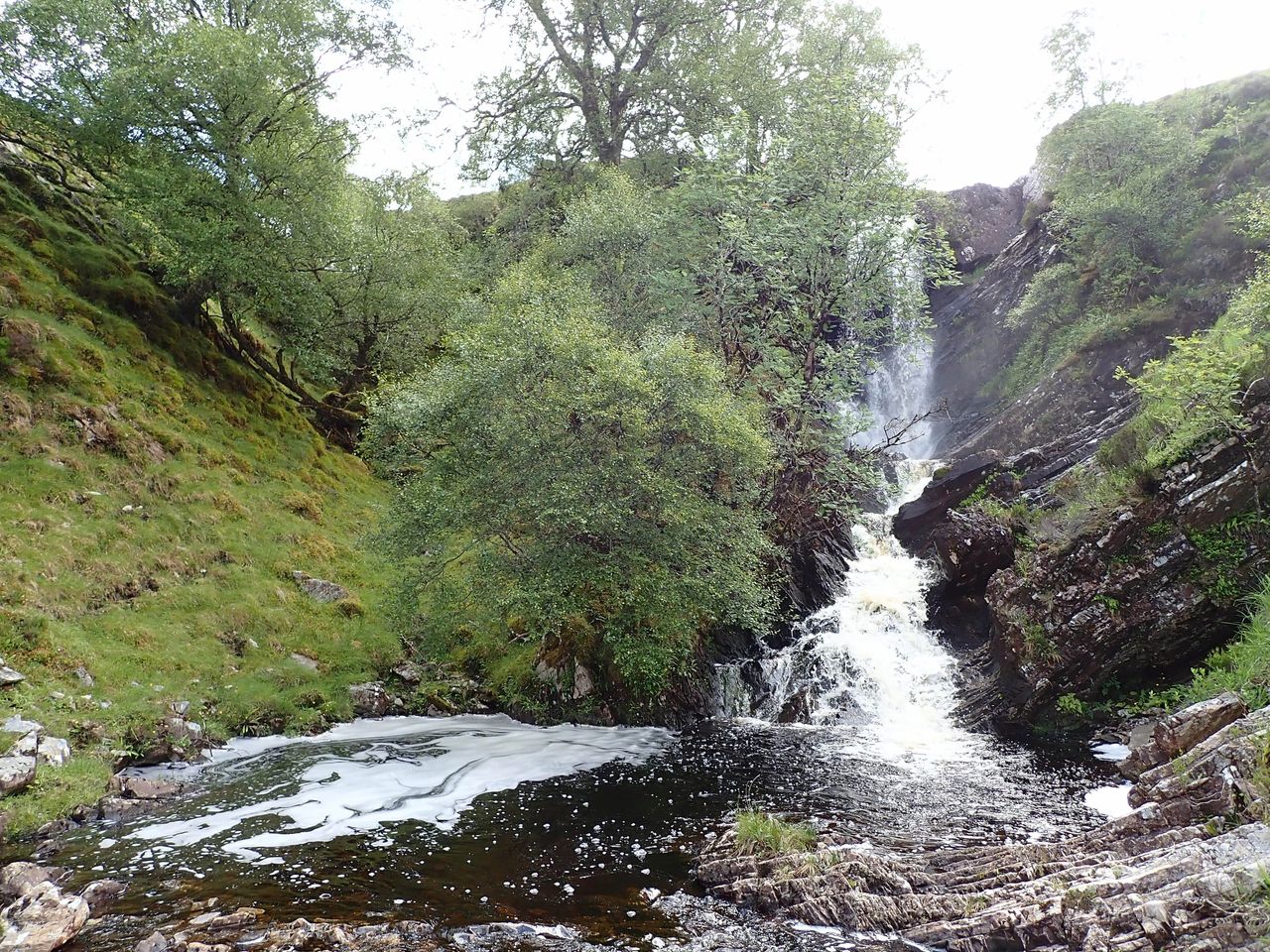
As a result of recent grazing by deer &/or sheep, the last phase of widespread tree regeneration at Coille Briste appears to have taken place in a single phase around 80-100 years ago, and possibly as much as 150 years, according to the lifespan of the even-aged, now senescing, alders & birches. It is not known how long the habitats may have remained bare of trees before then but grazing has evidently increased since, so ongoing regeneration is present only on the steep slopes once accessible to goats, and on cliffs.
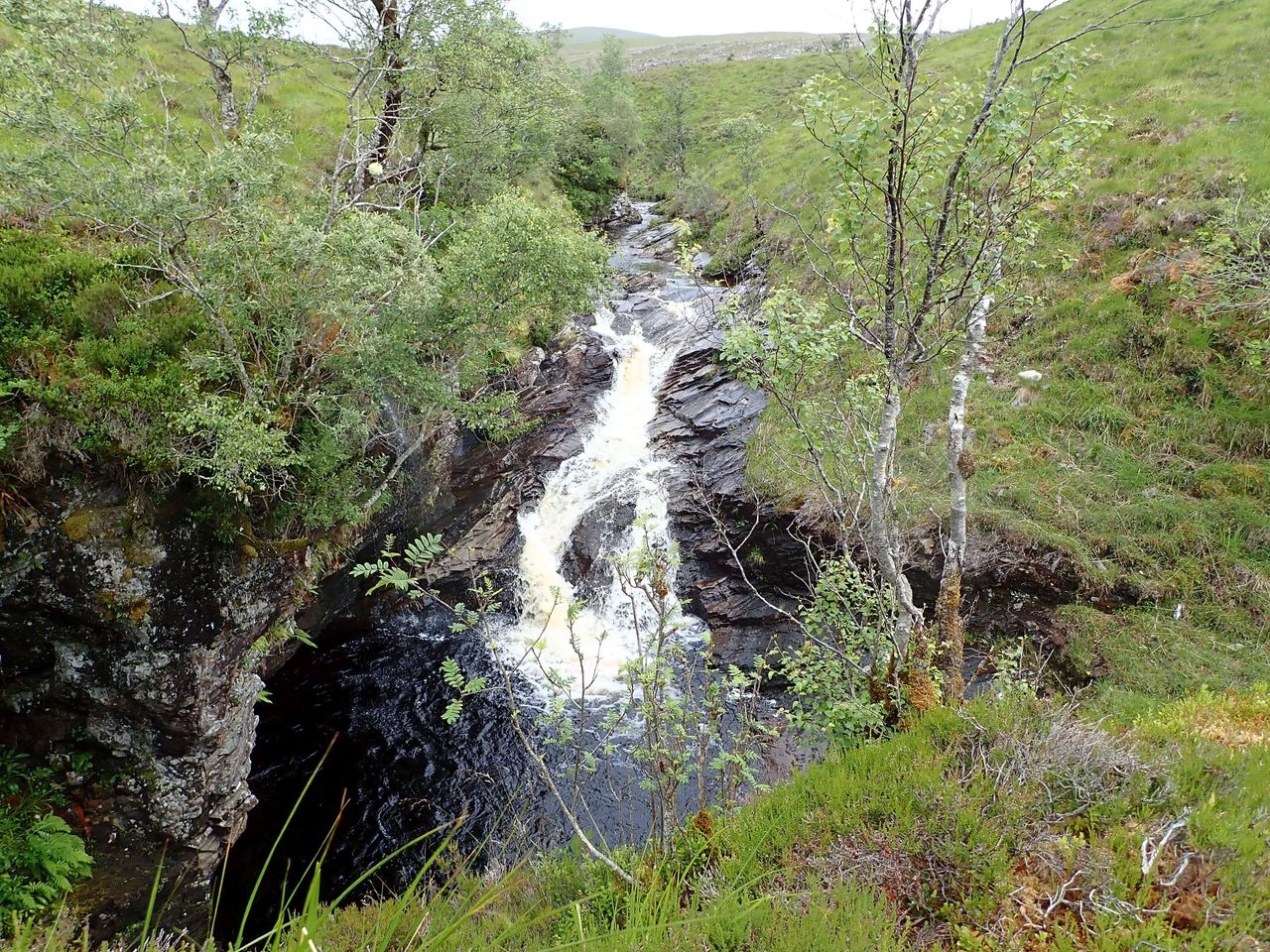
As Coille Briste demonstrates, if we want to recreate native woodlands beyond regenerating or planting trees, we are starting from a much-impoverished baseline. Furthermore, the alders at Coille Briste make clear that we are still losing relicts, and their potential, despite reduced grazing levels. They are a part of our biodiversity heritage that offers numerous ecosystem services so that the needs of relicts, and our society, can be combined to create woodlands that are beautiful, resilient & functional.
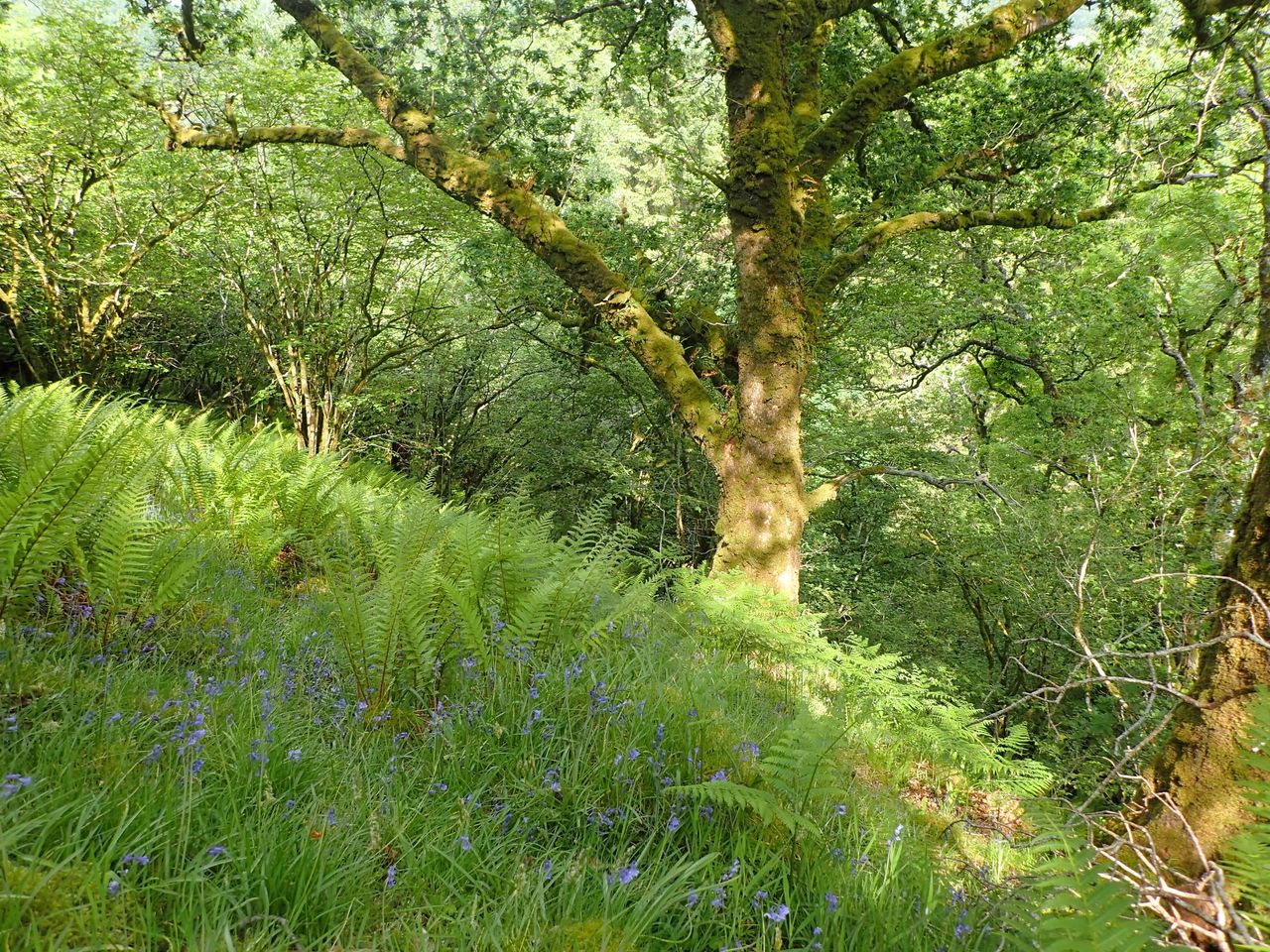
Ecosystem services from relicts include packing as much carbon as possible in amongst the trees, or increasing floodwater retention between trunks, amongst others. However, these services are constrained by the currently limited distribution & number of species, and structural groups (e.g. scramblers, shrubs, epiphytes, etc.), that complete the sub-canopy ‘filling’. Furthermore, the shock of tree planting often impacts further upon relicts that are then lost beneath a dense sward of Yorkshire fog in the lowlands, or purple moor-grass in the uplands. We can’t just regenerate or plant trees and blithely hope that flowers will return from their scattered, small refugia – they require management as much as the trees, and unfortunately, probably more.
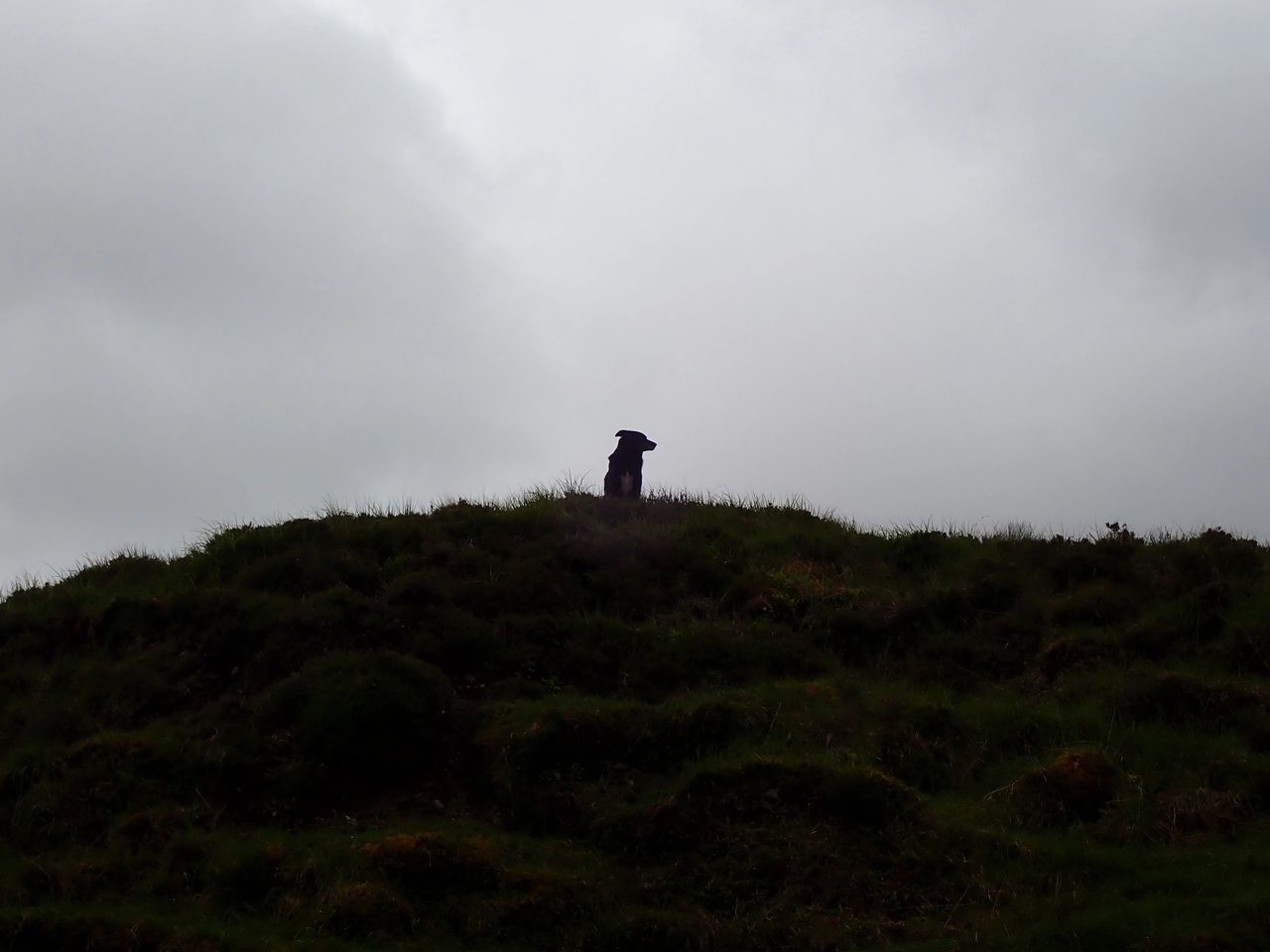
Coille Briste’s woodland relicts at least have a promising future. Its inclusion in a planting scheme means that grazing will be controlled and legislative constraints will ensure that space is left along the river in which native species can expand. Hopefully, with time, the nine remaining sub-canopy relicts will leave their cliff-face refugia to spread more widely; and there is always the excitement too of those plants that either remain hidden or spread in, to suddenly appear as if from nowhere. Woodland relicts might be aging, isolated & struggling but there is vitality in them yet …
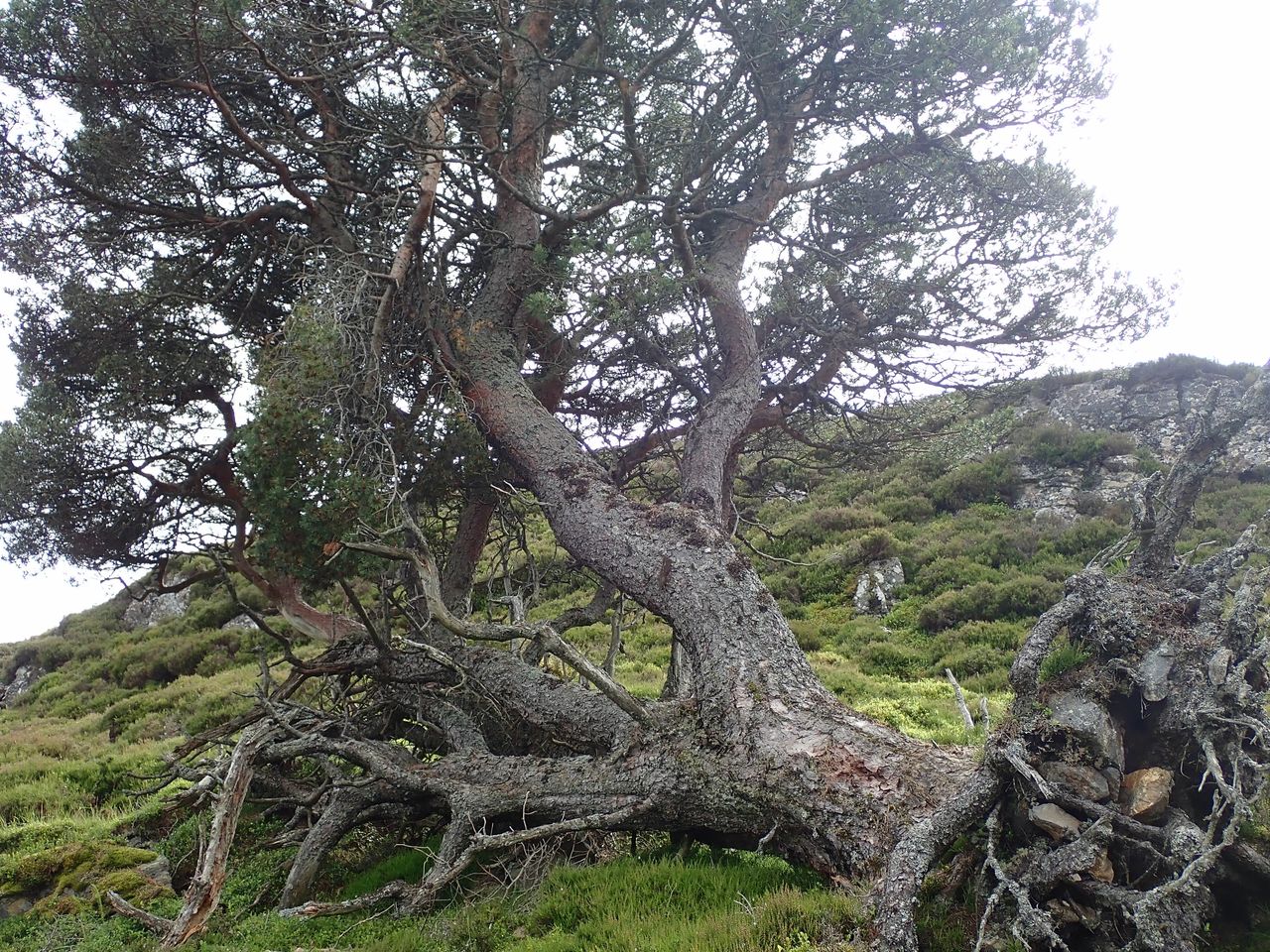
Blog post courtesy of CASE partner Botanæco and relates to the content of Annabel Everards QUADRAT DTP PhD. For more posts like this please visit the Botanæco Blog.






















































